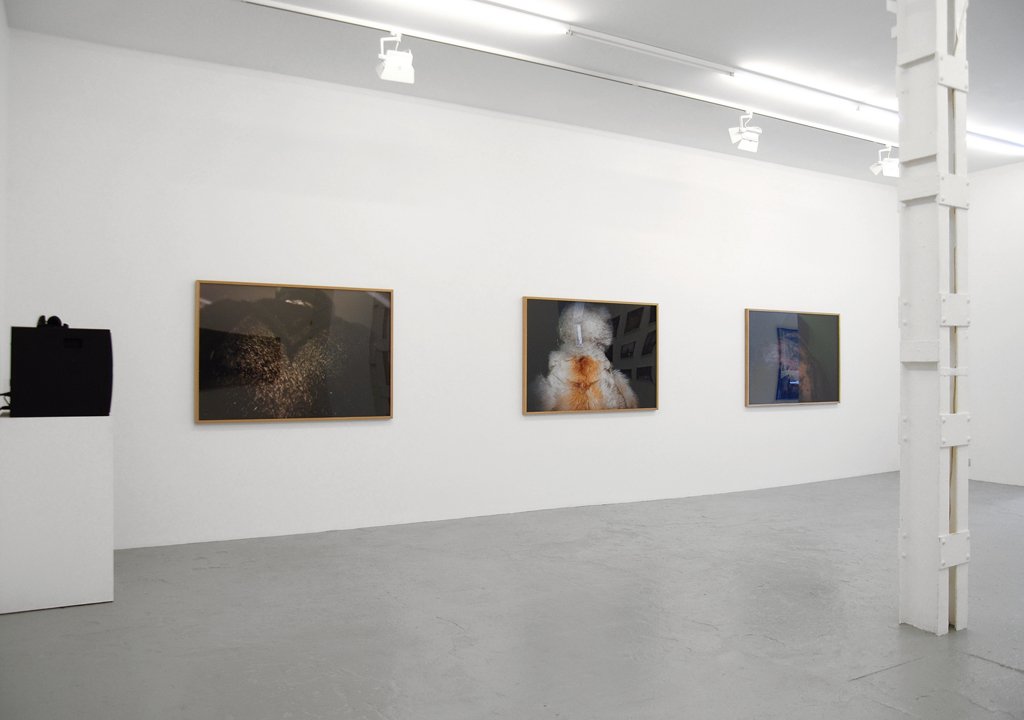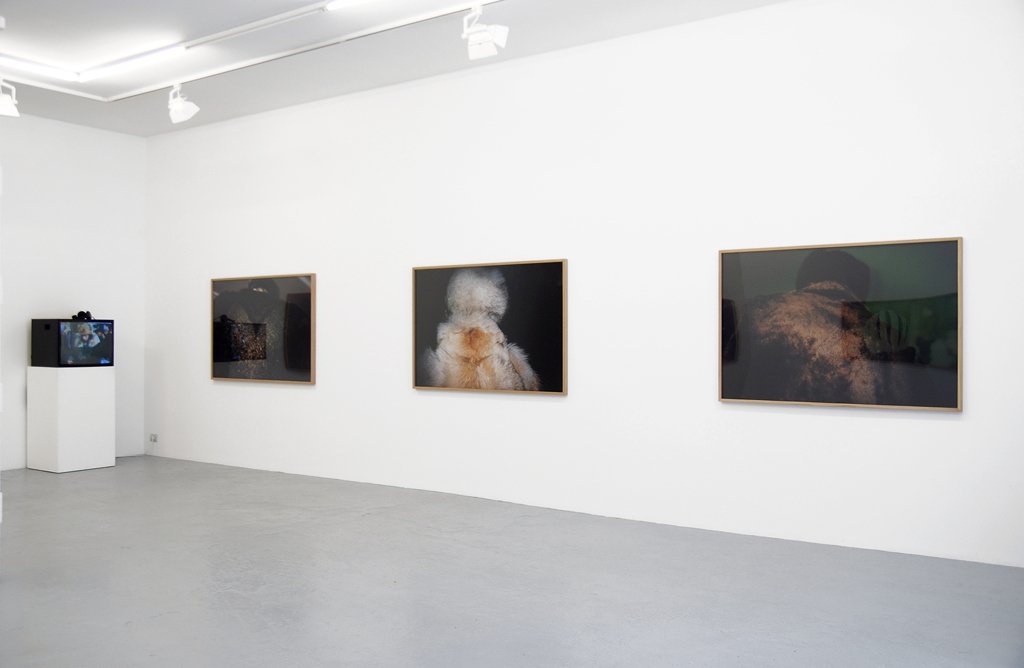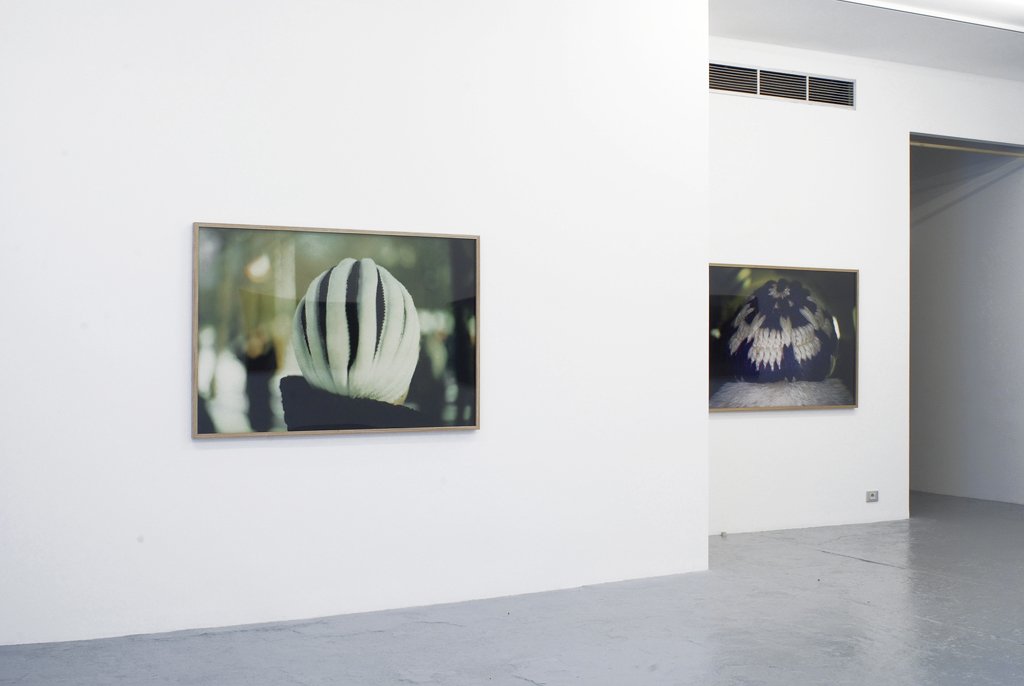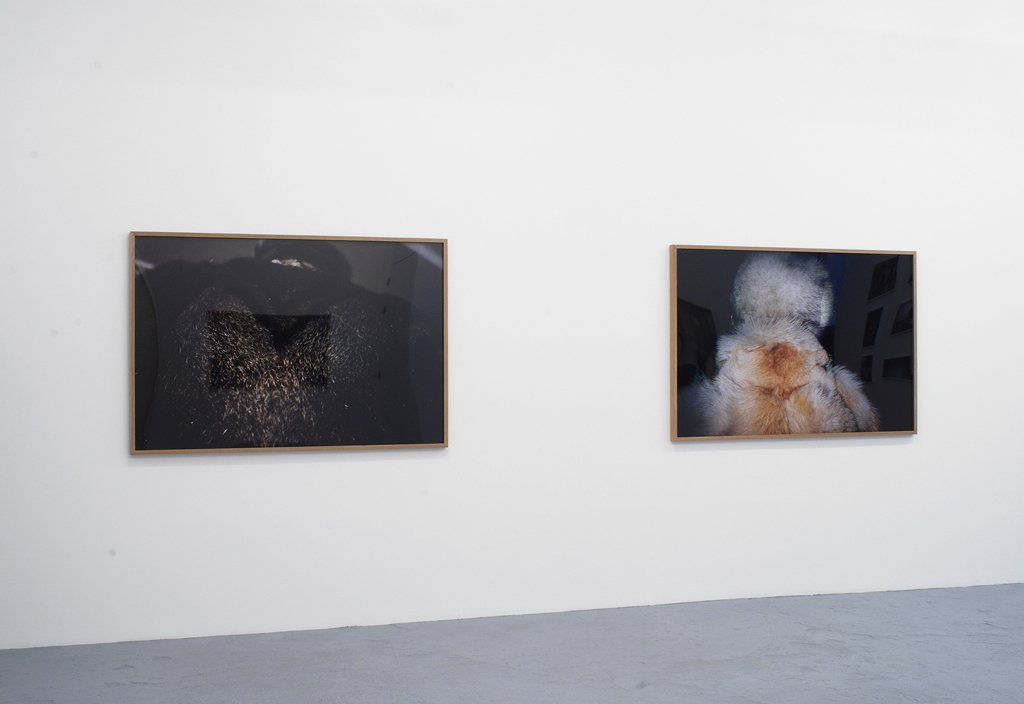Olga Chernysheva: Involutions
4 September–13 October 2007, Brussels
Olga Chernysheva, Involutions, Catherine Bastide gallery, Brussels, 2007, exhibition view
INVOLUTIONS
Galerie Catherine Bastide and Foxy Production, New York, are pleased to present Involutions an exhibition of work by Moscow-based artist Olga Chernysheva which will open on Friday, September 07 and run through October 13th.
Chernysheva uses a range of media to produce expressive, penetrating artworks that take contemporary Russian experience as their theme. Her often unwitting subjects are observed negotiating a society in turbulence, where a common sense of a shared future has disintegrated. Her films and photographs transcend their documentary function to lyrically investigate the very fabric of individuality and self-sufficiency, and to expansively meditate on the role of the artist in a time of flux. The exhibition presents a broad range of work produced by Chernysheva in recent years. It comprises the videos March and Marmot and selections from the photographic series, Second Life, Waiting for the Miracle, Open Air and On Duty, her most recent series of photographs.
Second Life show women in ample fur coats and fluffy fur hats shoot, from the back, in the darkness of Moscow subway. They look like bizarre animals caught in a trap, sunken in their loneliness. In the series of photographs entitled Waiting for the miracle, she has photographed anonymous women (always shot from behind) in their typically Russian, round, knitted hats. Chernysheva appeals to the notion of women as enigmatic and closed spheres who carry their dreams and desires with them without understanding them, and thus appeals to a notion that has often been transferred to Russia itself.
Marmot, a poignant and witty 3-minutes video by Chernysheva, shows an old Stalinist woman, tired of protesting, fallen behind a street demonstration, where her colleagues are protesting against capitalism in Russia. Strangely self-absorbed, she is struggling with indecipherable little stuff in her palm (while Stalin's portrait rests casually under her arm). As the soundtrack, we hear Beethoven’s Marmot played slightly out of tune, diligently and naively, by a child.
March (2005), shows us some ceremony that, at first glance, resembles deeply rooted Soviet traditions in many ways with flags, balloons, an orchestra playing marches, and rows of small boys in military uniform alongside pretty, half-dressed, dancing girls. But then again, it is nearly impossible to understand what exactly this parade of cadets is celebrating. The main word of the celebration is "Glory!" In the Russian language, "Glory!" is always attributed to something (i.e. "Glory to Russia!", "Glory to the Communist Party!", etc.) Yet in this case, the object of glorification seemed to be absent. There is no hint of the former authoritarianism: here, military strictness merges with the impossibly early eroticism of the dancers, and the balloons swaying in the wind move first to the slogan ‘Hurrah’ and then to the slogan ‘Panasonic/Ideas for life’. As the camera glides along the participants in the festival, the focus is upon the mechanical nature of the movements and the vacant looks. Chernysheva gets the outer, somehow sad side of the celebration that becomes a separate event of its own.
On Duty (2007) is a group of large black and white photographic portraits on matte paper of uniformed functionaries, who spend their time watching or, perhaps more to the point, solemnly doing nothing. Rather than merely satirizing them and their roles, Chernysheva is interested in capturing their ambivalent and ambiguous gazes.
OLGA CHERNYSHEVA (Moscow, 1962) holds a BA from the Moscow Cinema Academy, Moscow, and an MA from the Rijksakademie Van Beeldende Kunsten, Amsterdam.Her works include paintings, objects, drawings, photographs, and video films and installations. She lives and works in Moscow.
Selected exhibitions include: Isle of Sparks, Foxy production, New York (solo) (2007); Moscow Biennale for Contemporary Art (2007); Biennale of Sydney (2006); Museum Folkwang, Essen (2006); Hamburger Kunsthalle, Hamburg (2006); Salzburger Kunstverein, Salzburg (2006); Stella Art Gallery/Foundation, Moscow (solo) (2006 & 2005); Moscow Multimedia Center for Contemporary Arts, Moscow (solo) (2005); White Space Gallery, London (solo) (2005); Solomon R Guggenheim Museum, New York (2005); The State Russian Museum, Saint-Petersburg, Russia (solo) (2004); National Museum of Contemporary Art, Oslo (2004); Museum of Contemporary Art, Zagreb (2004); Russian Pavilion, 49th International Art Exhibition, Venice Biennale (2001).
Olga Chernysheva, Involutions, Catherine Bastide gallery, Brussels, 2007, exhibition view
Disclosing desires, catalogue 2001, 49th Venice Biennale
In Russia, a fur coat is a banality. It is not about being rich, or glamorous, or sexy; not about breaking out of the crowd. It is about warmth: a warm and soothing feeling of belonging. To disguise oneself as a beast means showing oneself as a decent human being. Which also means to secure oneself not just from cold, but from other human beings as well: a serious fur coat, coupled with a grave fur shapka, is an everyday cocoon of anonymity. It is an intimate rescue from society, politics, and media, a retreat into nature, into the oblivion of living your simple life, which, after the 20th century ideological disasters, is seen as an envious state in Russia. Post-Soviet citizens of both genders are willingly becoming an elegant flora or a charming fauna, since they deeply believe you can only live authentically when you forget about any ideas which bring nothing but grief.
Big, furry, and self-absorbed animals make their way through the thick forest of the wintry Moscow megapolis. An army of busy moles, gophers and beavers parade through the subway. Walter Benjamin, a lonely flaneur in a communist, and not a capitalist, city, once found Moscow rural more than urban; nowadays, even with its new capitalist chic it still has something of the steppe.
Olga Chernysheva, another Moscow flaneuse (she shares her time between Amsterdam and Russia), follows the fluffy crowd so close she can smell the naphthalene. A flaneuse in Moscow is unable to keep distance: her vision only comes out of closeness. And what she sees is the very norm of belonging, the society where people, images and ideas are sticked together, and individuation requires heroism.
Chernysheva’s photographs, videos and installations are all about closeness rather than distance about impossible meetings (of mother and daughter photographed at the same age, for example), about a miracle of something suddenly looking like something else. She captures moments of vague transformations and elusive similarities, affording privilege to multidimensionality of the tactile rather than the unambiguous clarity of vision. We touch the bear and discover it is a woman.
Once exposed, these cool observations become witty and even sarcastic comments. Chernysheva constantly compares, and things unequivocally give in to her irony: it is an irony of life itself. She proves that old women’s knitted hats are like small planets; kitschy wedding cakes are like fairy-tale flowerbeds; onion bulbs customarily planted on Moscow windowsills are like Orthodox domes. Once you saw it this way you can t see it otherwise: an intimate wish of reality to become something else is disturbing and poignant. Olga Chernysheva discloses unfulfilled desires, which makes her one of the shrewdest observers of Russia s post-ideological landscape.
Ekaterina Degot, 2001





















